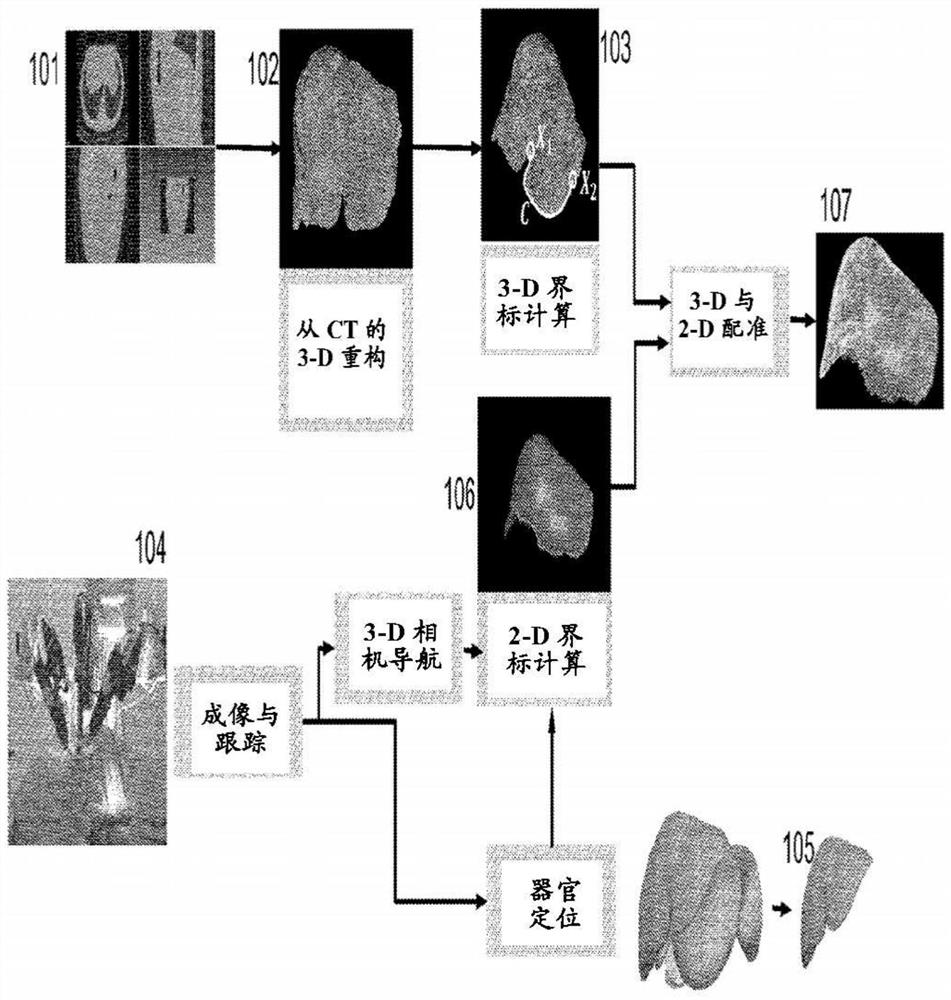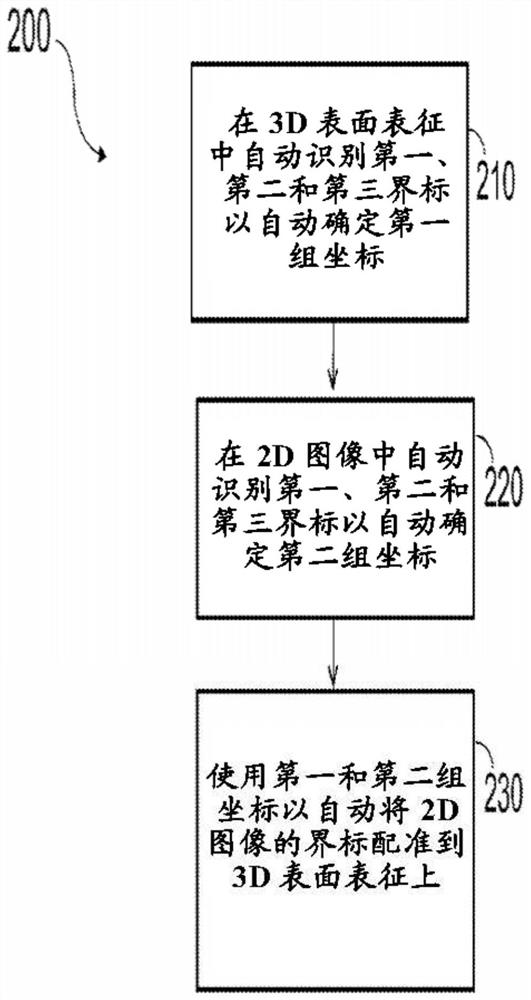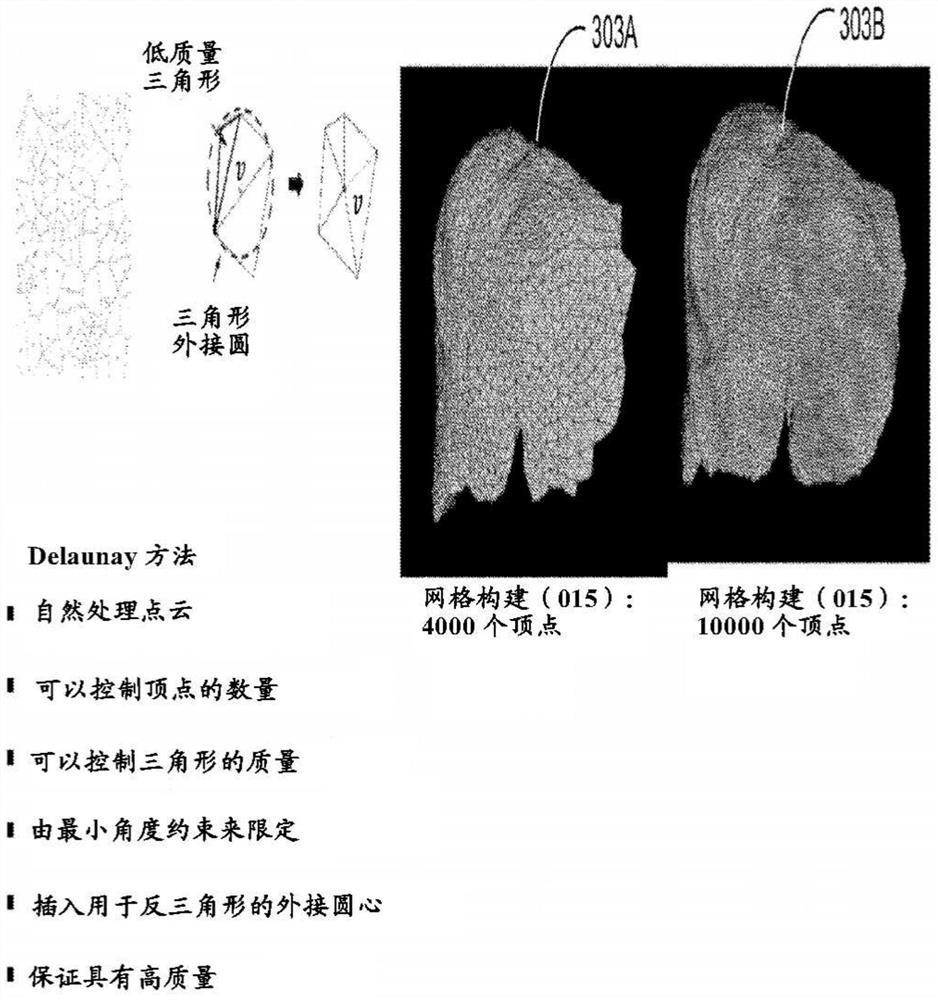An alignment system for liver surgery
An automatic registration and landmark technology, applied in the field of alignment system for liver surgery, can solve problems such as difficult image alignment
- Summary
- Abstract
- Description
- Claims
- Application Information
AI Technical Summary
Problems solved by technology
Method used
Image
Examples
Embodiment Construction
[0012] Embodiments described herein provide the surgeon or surgical team with 2D representations of 3D landmarks of an organ or region of interest aligned with the current 2D laparoscopic viewing angle to a useful high degree of accuracy during a laparoscopic procedure. It is assumed that a 3-D representation of the organ or region is obtained and enabled for preoperative studies, and a 2-D laparoscopic image of the organ or region is obtained in real time during surgery.
[0013] The present invention offers benefits over current alignment approaches, which are time consuming and require specialized skills. Instead of requiring extensive input from an operator at various stages of the image alignment process, new methods of implementing these stages have been developed that are particularly suited to implementation by automatically operating computer-based processing systems. Also, it does not rely, as current practice typically does, on the use of additional specialized equi...
PUM
 Login to View More
Login to View More Abstract
Description
Claims
Application Information
 Login to View More
Login to View More - R&D
- Intellectual Property
- Life Sciences
- Materials
- Tech Scout
- Unparalleled Data Quality
- Higher Quality Content
- 60% Fewer Hallucinations
Browse by: Latest US Patents, China's latest patents, Technical Efficacy Thesaurus, Application Domain, Technology Topic, Popular Technical Reports.
© 2025 PatSnap. All rights reserved.Legal|Privacy policy|Modern Slavery Act Transparency Statement|Sitemap|About US| Contact US: help@patsnap.com



